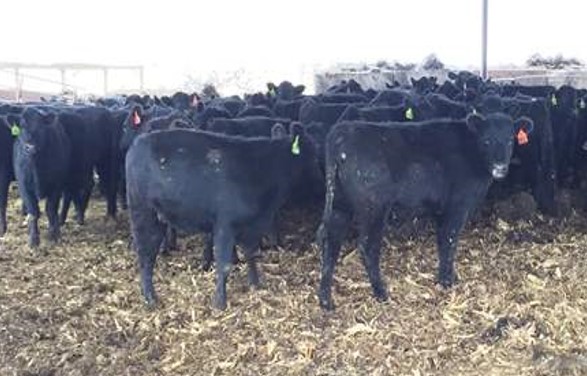Ukraine looks beyond its borders to beef up its meat sector

FAO and EBRD support knowledge sharing on study tour to Denmark and the United States
Over the past decade, Ukraine’s meat sector has grown as production and consumption have increased. Industry is working to keep pace with local demand while also boosting exports; and although the meat trade balance is negative, the gap between imports and exports is narrowing. Beef and pork in particular have high growth potential that could be met faster with improvements in efficiency, quality, safety and cooperation. To help reach these goals, the Food and Agriculture Organization of the United Nations (FAO) and the European Bank for Reconstruction and Development (EBRD) arranged a meat industry study tour for eleven Ukrainian producers, processors and government representatives to Denmark and the United States -- both global leaders in meat production -- from 4-14 November.
The Danish pork sector is nearly unparalleled in terms of breeding, quality, food safety and traceability. Because of the country’s high standards, 95 percent of Danish pig meat is exported, of which 70 percent goes to EU countries – a target market for Ukraine. Similarly, the sector in the United States is highly competitive and efficient, accounting for 547 000 jobs and USD 39 billion of the gross national product. In fact, the United States is the biggest exporter of pork worldwide.
FAO’s Investment Centre and the EBRD have been working with Ukrainian meat industry associations, leading companies and government representatives since 2013 to facilitate policy dialogue and maximize competitiveness and growth opportunities. By introducing a mixture of private and public sector representatives to two countries where policy and industry complement each other, Ukraine will be better positioned to develop its meat sector evenly and efficiently.
Cooperation is king in Denmark
The study tour began with two days in Denmark, primarily to meet different forms of cooperatives involved in the meat sector. The group’s exposure to organizations like the Danish Agricultural Advisory Service (DAAS), a farmer-owned and controlled advisory system, and the Association of Pig Breeders of Denmark, provided ideas about internal structure, cooperation with the public sector, and benchmarking activities.
“It is essential for us to work together to achieve higher safety and quality standards required by international countries and demanded by consumers,” said Nataliia Drembliuha, President of the Association of Meat Processors “Miaso Ukrainy”. “Our meetings in Denmark gave us the opportunity to see how different meat processors and cooperatives operate and understand what could work best for us.”
Denmark is a long-standing leader in meat production in the EU so the integration of its value chains, the strong representation of farmers through cooperatives, and the collaboration between industry, academia and government are important examples for any developing sector to see.
From Europe to the United States
In Des Moines, Iowa, the Ukrainian delegation jumped into the world of top-level agricultural policy through a meeting with the Secretary of Agriculture of Iowa and the Food Safety Inspection Service of the US Department of Agriculture (USDA). They learned the functions of Federal and State regulators and their protocols for livestock slaughtering, processing, labeling and marketing -- which are especially relevant as Ukraine increases its emphasis on meat exports.
A number of study tour participants are also members of an FAO and EBRD-supported working group that elevates industry concerns to the public sector through policy dialogue. With this in mind, many of the meetings were with collectives or private groups that organize farmers and producers to help consolidate communications, marketing and knowledge sharing for long-term economic growth.
From theory to practice
“We are going home with a much clearer idea of different ways we can organize, market and monitor ourselves,” said Oksana Yurchenko, Vice President of the Pig Breeders Association of Ukraine. “We have high expectations for our pig sector and have already made significant production investments in recent years. This opportunity to learn from the experts in more consolidated value chains will help us meet the growing domestic demand for quality pork products and look outward to new markets.”
By featuring public and private sector stakeholders in the study tour group, the 11 days of travel facilitated a shared vision of how government and industry can work together for higher growth.
“Our hope, which I expect will be reality, is that the group will return home with a new motivation to replicate or modify versions of what they have seen in Denmark and the United States,” said Andriy Yarmak, Economist in the Investment Centre of FAO. “Over the course of the study tour, I could feel concerns turning to excitement at the great opportunity Ukraine has to take these learnings and become a competitive global player.”
